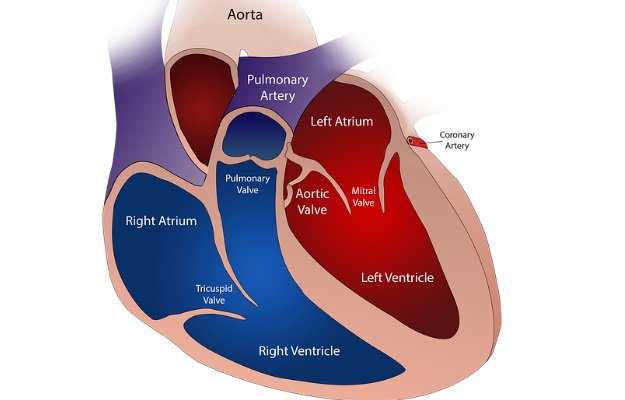What is aortic stenosis?
Aortic stenosis is a condition marked by narrowing of the aorta, which is the largest blood vessel in the heart. A stenosed aorta makes pumping blood difficult and usually blocks the blood flow from the heart. This can cause thickening of the heart muscles, and the extra load exerted on it can lead to heart failure.
Click on the link given here, to know in detail about the ayurvedic treatment of heart disease.
The estimated prevalence of aortic stenosis is up to 7% over 65 years of age and is more common in men (80%). In children, it occurs more often in boys than girls. The prevalence of any valve disease in India is 2.8%, out of which aortic stenosis is 0.4%.
(Read More - Angioplasty)
What are the main signs and symptoms of aortic stenosis?
Symptoms may vary with age and the severity of the blockage. Patients may not experience any symptom until the condition has reached the advanced stage wherein the restricted blood flow becomes a concern.
Severe stenosis may have the following signs and symptoms:
- Tiredness or fatigue
- Bluish discolouration around the lips and skin (cyanosis)
- Fainting
- Shortness of breath
- Irregular heartbeats
- Chest pain or pressure
Infants may have feeding problems and may not gain weight. They may also show tiredness and breathing difficulty, which develops within days or weeks of birth. The condition may worsen with age in children with mild or moderate stenosis, and they are also at risk of bacterial infection.
(Read More - What is CPR)
What are its main causes?
It can occur congenitally or it can be acquired.
- Congenital
- Malformation of the aortic valves may be the reason behind childhood aortic stenosis.
- These may not cause serious problems, but with age the valves can narrow down or leak, making it difficult to repair or replace.
- Acquired
- In adults, it can occur due to streptococcal infection (rheumatic fever) eventually forming scars and finally stenosis.
- Calcium Build-up
- Calcium deposits around the valve may stiffen leading to stenosis.
- It may not be associated with calcium intake externally.
- Chest radiation can promote calcium deposition.
(Read More - Cardiac Arrest)
How is it diagnosed and treated?
Major indications for abnormal blood flow are a heart murmur, click or an abnormal sound while examining with a stethoscope, faint pulse, or change in the quality of pulse through the neck. Blood pressure is also found to be low.
Following tests may be recommended by your doctor:
- Chest x-ray
- Electrocardiogram (ECG)
- Exercise stress test
- Left cardiac catheterisation
- Magnetic resonance imaging (MRI) of the heart
- Transoesophageal echocardiogram (TEE)
Treatment is given depending on the severity of the condition. Medicines prescribed are mainly to treat symptoms of heart failure or irregular heart rhythm. Blood pressure should also be kept under control. If one has to undergo any dental procedures or colonoscopy, it is better to check for antibiotic use with the healthcare provider. Antibiotics may be prescribed to children to prevent bacterial endocarditis after hospital discharge. Surgery for repair or replacement of valves is usually done in adults or children who have symptoms. Patients who have undergone mechanical valve replacement may need to take blood thinners to avoid clot formation in the valves. A less invasive balloon procedure called valvuloplasty may be performed instead of or prior to surgery.
(Get online doctor consultation for any health issue)
Non-drug methods for management include:
- Avoid strenuous or competitive sports
- Quit smoking
- Test for cholesterol
- Monitor blood clotting status
- Regular check-ups
Treatment along with lifestyle changes can reduce the severity of aortic stenosis.
(Read More - CT Coronary Angiography)
















